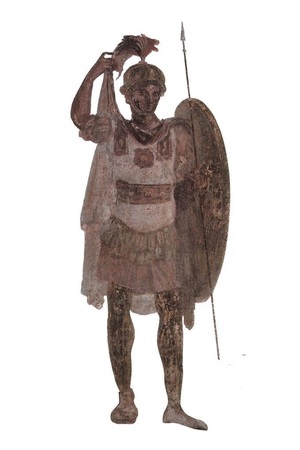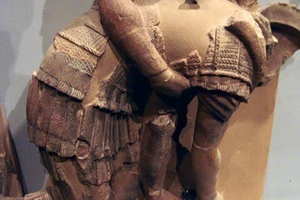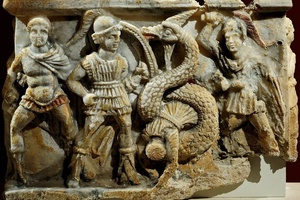Lorica lintea
Lorica lintea (Latin: Lorica lintea) is an ancient Roman armor consisting of several layers of specially treated dense linen fabric, similar to the ancient Greek linothorax. The expression "lorica lintea" is derived from the Latin word "linum" (linen) and literally means "linen cuirass."
Armor of the lorica lintea type was made from 2-3 layers of linen fabric, which were boiled in a saline solution with vinegar. Boiling gave the armor the necessary hardness but deprived it of flexibility. Little is known about lorica lintea in Ancient Rome, but it is believed that Latin hoplites and velites could have used it during the time of the Kings and the Republic. During the Empire, these types of armor were rarely used, and only two depictions of fighters, presumably wearing lorica lintea, have survived—a praetorian guard and a centurion, both dating back to the first century. However, distinguishing between lintea and linothorax is not easy, and it is likely that lintea is simply the Roman term for linothorax.
There were also its component variations - more mobile, but less protected. Perhaps they were more important for status than for protection. This type was widespread in the Italian peninsula. Over time, this subspecies of armor is rapidly being replaced by alternative variations of lorik, probably due to the low protective properties and complexity of manufacturing.






